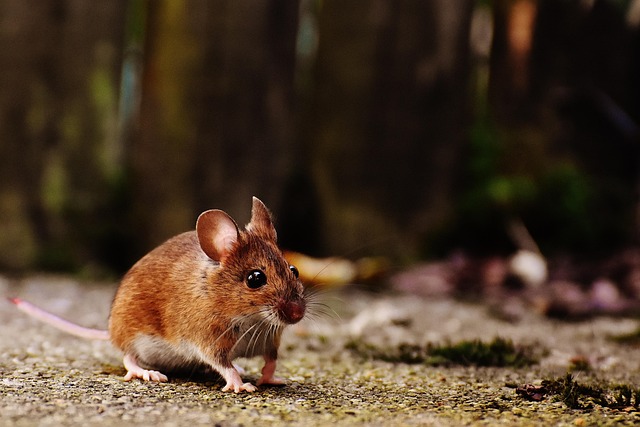Rodent infestation treatment demands a sophisticated approach considering rodents' behavior, ecology, and environmental impact. Traditional methods like traps and poison are often insufficient and harmful to non-target species. Humane control emphasizes non-lethal strategies such as habitat modification, exclusion, and natural repellents, prioritizing safety and eco-friendliness. Sustainable alternatives include using mint, basil, catnip, physical barriers, and innovative tech. Community engagement through preventive measures like cleanliness and sealing entry points further reduces rodent attraction, fostering a safer, more harmonious coexistence between humans and wildlife while addressing rodent infestation treatment effectively.
In many urban environments, rodent infestations pose a significant challenge due to their rapid reproduction and adaptation skills. This article explores humane and eco-conscious approaches to manage these issues, offering an alternative to traditional methods. We delve into the behavior and ecology of rodents, providing insights for effective control. From comparing conventional to more benevolent techniques, to discovering eco-friendly solutions, we offer practical strategies for both management and prevention. By engaging communities and implementing sustainable practices, we can achieve a harmonious balance between urban living and wildlife conservation. Discover how these methods provide an ethical and efficient rodent infestation treatment.
Understanding Rodent Infestations: Behavior and Ecology
Rodent infestations are complex issues that demand a nuanced understanding of their behavior and ecology to implement effective, humane, and eco-conscious rodent infestation treatment methods. These small mammals are highly adaptable and possess remarkable survival skills. They thrive in diverse environments, from urban areas to natural habitats, and exhibit intricate social structures and sophisticated behaviors.
Understanding how rodents interact with their surroundings is key to successful management. Rodents reproduce quickly, often with multiple litters per year, which contributes to the rapid spread of infestations. Their burrowing habits create complex underground networks that facilitate movement and shelter, making traditional traps or poison less effective and potentially causing environmental disruption.
Traditional vs. Humane Rodent Control Methods
In addressing rodent infestation treatment, it’s crucial to distinguish between traditional and humane control methods. Conventional approaches often rely on toxic chemicals, traps, or poisons, which can be effective but also pose significant risks to non-target species, humans, and the environment. These methods may lead to secondary poisoning, unintended animal deaths, and potential contamination of soil and water sources.
Humane rodent management, on the other hand, focuses on non-lethal strategies such as habitat modification, exclusion, and deterrents. This approach prioritizes safe and eco-friendly solutions by eliminating the conditions that attract rodents, while also respecting the well-being of both animals and humans. By employing methods like sealing entry points, maintaining cleanliness, and using natural repellents, humane rodent control offers a more sustainable and responsible alternative to traditional treatments, contributing to a healthier ecosystem and a safer living environment.
Eco-Friendly Solutions for Effective Rodent Management
In today’s world, where environmental consciousness is on the rise, it’s crucial to approach rodent management with both effectiveness and eco-friendliness. Traditional methods often rely heavily on toxic chemicals, which can pose significant risks to non-target species, water sources, and soil health. However, a shift towards more sustainable practices offers promising solutions for rodent infestation treatment without compromising the environment.
Eco-conscious approaches emphasize the use of natural repellents, habitat modification, and innovative technology. For instance, certain plants like mint, basil, and catnip are known to deter rodents due to their strong scents. Creating a physical barrier using mesh or modifying the environment by removing potential hiding spots can also be highly effective. Additionally, advanced technologies such as ultrasonic devices or motion-activated sprinklers provide humane alternatives that disrupt rodent activity without causing harm. These eco-friendly methods not only reduce environmental impact but also foster a safer and more harmonious coexistence between humans and wildlife.
Community Engagement and Prevention Strategies
Community engagement plays a vital role in humane and eco-conscious rodent management. Encouraging proactive prevention strategies among residents can significantly reduce the occurrence of rodent infestations. Educating folks on proper waste management, sealing entry points, and maintaining clean environments deters rodents from seeking shelter and food sources. Community efforts also foster a collective responsibility for shared spaces, ensuring a healthier and safer living environment for everyone.
Implementing prevention strategies at the grassroots level is an effective approach to rodent control. This includes organizing neighborhood clean-up drives, promoting regular inspections for potential entry points, and sharing best practices for rodent-proof housing. By empowering communities with knowledge and tools, these initiatives empower residents to take ownership of their surroundings, making them less hospitable to rodents and reducing the need for invasive treatment methods in the long run.
In addressing rodent infestation treatment, it’s clear that a shift towards humane and eco-conscious methods is both feasible and necessary. By understanding the behavior and ecology of rodents, we can employ effective yet ethical strategies like non-lethal traps, habitat modification, and community engagement to prevent future infestations. Adopting these approaches not only reduces environmental impact but also fosters a more sustainable and harmonious coexistence with these creatures, ensuring a healthier balance for both human communities and ecosystems.
